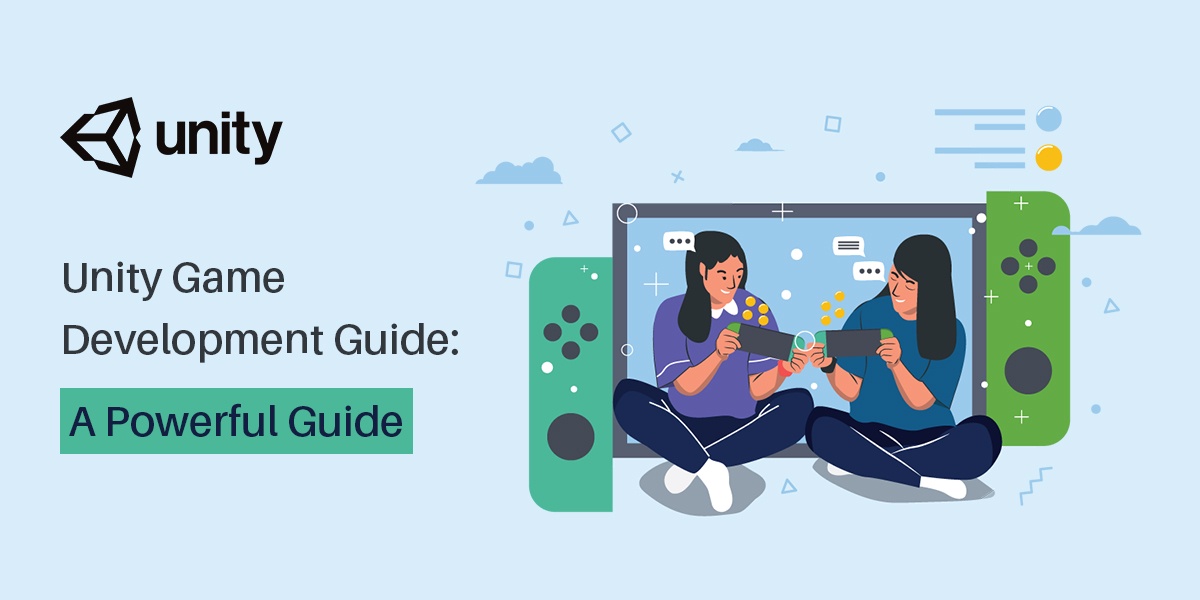Game development is seeing an upward curve in recent times. The video game market is estimated to reach $268.8 billion by 2025 (Statista). North America is a huge market for video game development.
Unity is an excellent framework for mobile game development. This tool is majorly used for 2D and 3D game design. Apart from that, you can also use it for prototype development. The platform’s extensibility, flexibility, and detailed documentation are reasons why developers use Unity.
Businesses have created puzzle-based games, strategy solutions, and other gaming types using this powerful engine. This guide will get you started with Unity game development and the things to consider when building a mobile game app.
What Is Unity? Benefits Of The Tool
Unity is a cross-platform game engine that offers a complete IDE to developers for game app development. It comprises various features, pre-built templates, and extensive libraries that can help with 3D rendering, collision detection, and other functionality you want to add to your game. With this engine, you can build and test your app faster. Moreover, you won’t need to build an app from scratch.
Here Are The Benefits Of Using Unity For Game Development.
1. As it is platform agnostic, you can create mobile apps for multiple platforms. You can use MacOS or Windows to build your game app. You can test and deploy gaming apps across platforms and devices.
2. It offers cost-efficient game app development, thus enabling more profits. As you can develop and test using pre-built templates, and in-built devices, you spend less effort and money on actual devices and resources.
3. You can develop high-quality graphics with the Unity engine. Developers can create realistic and highly convincing avatars with this 3D game development tool.
4. The Play Mode option in Unity allows developers to edit the work and make it production ready at the earliest.
5. You can create interactive, intuitive, and usable interfaces with the Unity engine, which ensures better accessibility and highly interactive solutions.
6. As you have pre-built templates and interactive libraries, you spend less time coding and developing the solutions. This saves a lot of your time as a developer.
7. It comes with extensive community support. As a result, you will never be stuck as a developer. You can easily ask for solutions from the developer community.
A Quick Overview Of Unity Engine
As discussed, you can use Unity for prototype development, animations, and full-cycle game app development. We will look at the different aspects of the Unity engine, including the in-built components.
#1 The Unity Editor
The editor window is the most important part of your Unity game engine. It includes the different sections that are important for game app development. You will get a scenic, game, and hierarchy window with this editor.
The Scenic View:
It is where most of the placements occur. You can introduce the game object movement in this area.
Game View:
You can check the preview in this section. You will know how the players will move while using this section.
Hierarchy View:
This is where most of the nesting and structuring will occur.
Assets/Project:
You can store most of your assets such as textures, models, and scripts in this part of the editor.
#2 The Game Objects
This is the second most important part of the engine. It includes the foundation for Unity game development. You can include all the assets within the game in the objects.
For example, if you have a ball in your game, it becomes a game object. Everything within a single scene can be described as an object.
In the case of a web design, it means <div> elements. So, the different <div> elements will become objects inside a game. They are extensible and can easily offer multiple functions.
While working with game objects, you might want to create a hierarchy. This includes nesting the game objects for better visual creation and logic development.
This will help you improve the clutter and enhance the efficiency of the game app. Eventually, it will also help with the proper positioning of the objects within the layout.
#3 In-built Components
Components are an important part of any IDE as they are flexible and reusable. You can use the same object multiple times once they are defined as components. The in-built components are scripted using C# or JavaScript programming languages. Here are all the key built-in components that you should know.
MeshFilter:
This will use the 3D mesh to use materials within the game objects.
Mesh Render:
It allows you to assign specific materials to the 3D mesh.
Collider:
Allows the engine to recognize the collisions.
Light:
Throws light on specific scenes as needed.
Camera:
The player’s viewport for the specific object is defined.
These in-built components can help developers create an apt gaming environment. It will ensure smooth movement within the games and assure better accessibility.
Conclusion
Unity is a great engine for mobile or PC game developers. You can use the in-built components, pre-built templates, and different functionality (extensibility, positioning, and objective) to create engaging and appealing games. As a business or game app creator with a solid game idea, you should partner with a suitable game app development company. They will have several hacks and tips up their sleeve, which can accelerate app development.


No comments yet